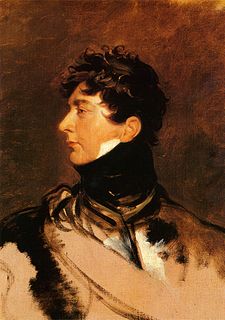 W
WThe Regency in the United Kingdom of Great Britain and Ireland was a period at the end of the Georgian era, when King George III was deemed unfit to rule due to his illness, and his son ruled as his proxy, as prince regent. Upon George III's death in 1820, the prince regent became King George IV. The term Regency can refer to various stretches of time; some are longer than the decade of the formal Regency, which lasted from 1811 to 1820. The period from 1795 to 1837, which includes the latter part of George III's reign and the reigns of his sons George IV and William IV, is sometimes regarded as the Regency era, characterised by distinctive trends in British architecture, literature, fashions, politics, and culture.
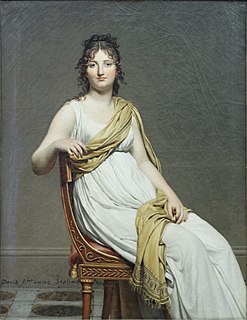 W
WFashion in the period 1795–1820 in European and European-influenced countries saw the final triumph of undress or informal styles over the brocades, lace, periwigs and powder of the earlier 18th century. In the aftermath of the French Revolution, no one wanted to appear to be a member of the French aristocracy, and people began using clothing more as a form of individual expression of the true self than as a pure indication of social status. As a result, the shifts that occurred in fashion at the turn of the 19th century granted the opportunity to present new public identities that also provided insights into their private selves. Katherine Aaslestad indicates how "fashion, embodying new social values, emerged as a key site of confrontation between tradition and change."
 W
WRegency architecture encompasses classical buildings built in the United Kingdom during the Regency era in the early 19th century when George IV was Prince Regent, and also to earlier and later buildings following the same style. The period coincides with the Biedermeier style in the German-speaking lands, Federal style in the United States and the French Empire style. Regency style is also applied to interior design and decorative arts of the period, typified by elegant furniture and vertically striped wallpaper, and to styles of clothing; for men, as typified by the dandy Beau Brummell, for women the Empire silhouette.
 W
WAlmack's was the name of a number of establishments and social clubs in London between the 18th and 20th centuries. Two of the social clubs would go on to fame as Brooks's and Boodle's. Almack's most famous establishment was based in assembly rooms on King Street, St James's, and was one of a limited number of upper class mixed-sex public social venues in the British capital in an era when the most important venues for the hectic social season were the grand houses of the aristocracy. The site of the club, Almack's Assembly Rooms or Willis's Rooms, has become retrospectively interchangeable with the club, though for much of the club's lifetime, the rooms offered a variety of other entertainments with no connection to the club.
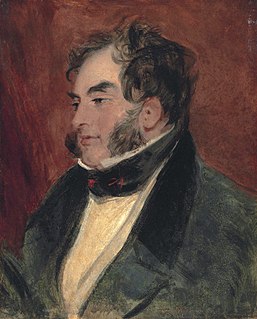 W
WWilliam Arden, 2nd Baron Alvanley was a British Army officer, peer and socialite, who was a friend of Beau Brummell and one of a close circle of young men surrounding the Prince Regent.
 W
WThe Battle of Waterloo is an oil on canvas by William Sadler II made in June 1815.
 W
WLa Belle Assemblée was a British women's magazine published from 1806 to 1837, founded by John Bell (1745–1831).
 W
WBlackadder the Third is the third series of the BBC sitcom Blackadder, written by Richard Curtis and Ben Elton, which aired from 17 September to 22 October 1987. The series is set during the Georgian Era, and sees the principal character, Mr. E. Blackadder, serve as butler to the Prince Regent and have to contend with, or cash in on, the fads of the age embraced by his master.
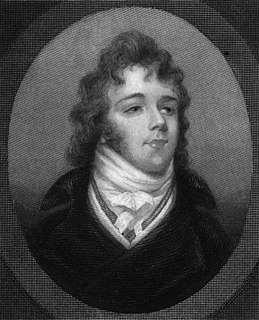 W
WGeorge Bryan "Beau" Brummell was an iconic figure in Regency England and for many years the arbiter of men's fashion. At one time he was a close friend of the Prince Regent, the future King George IV, but after the two quarrelled, and Brummell got into debt, he had to take refuge in France. Eventually he died shabby and insane in Caen.
 W
WGeorge Gordon Byron, 6th Baron Byron,, known simply as Lord Byron, was a British peer, who was a poet and politician. He was one of the leading figures of the Romantic movement, and is regarded as one of the greatest British poets. He remains widely read and influential. Among his best-known works are the lengthy narrative poems Don Juan and Childe Harold's Pilgrimage; many of his shorter lyrics in Hebrew Melodies also became popular.
 W
WRichard Cosway was a leading English portrait painter of the Regency era, noted for his miniatures. He was a contemporary of John Smart, George Engleheart, William Wood, and Richard Crosse. His wife was the Italian-born painter Maria Cosway, a close friend of Thomas Jefferson.
 W
WRegency dance is the term for historical dances of the period ranging roughly from 1790 to 1825. Some feel that the popular use of the term "Regency dance" is not technically correct, as the actual English Regency lasted only from 1811 until 1820. However, the term "Regency" has been used to refer to a much broader period than the historical Regency for a very long time, particularly in areas such as the history of art and architecture, literature, and clothing. This is because there are consistencies of style over this period which make having a single term useful.
 W
WGeorge III was King of Great Britain and King of Ireland from 25 October 1760 until the union of the two countries on 1 January 1801, after which he was King of the United Kingdom of Great Britain and Ireland until his death in 1820. He was concurrently Duke and Prince-elector of Brunswick-Lüneburg ("Hanover") in the Holy Roman Empire before becoming King of Hanover on 12 October 1814. He was a monarch of the House of Hanover, but unlike his two predecessors, he was born in Great Britain, spoke English as his first language, and never visited Hanover.
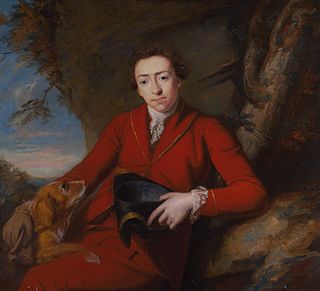 W
WSir John Lade, 2nd Baronet was a prominent member of Regency society, notable as an owner and breeder of racehorses, as an accomplished driver, associated with Samuel Johnson's circle, and one of George IV's closest friends. At the time he caused some sensation both because of the extent of his debts and the scandal attached to his marriage to his wife Letitia, a woman who was generally supposed to have been previously the mistress of both the executed highwayman John Rann and the Prince Regent's brother, the Duke of York.
 W
WWilliam Schaw Lindsay was a British merchant and shipowner who was the Liberal Member of Parliament for Tynemouth and North Shields from 1854 to 1859 and for Sunderland from 1859 until his resignation on grounds of ill-health in 1864.
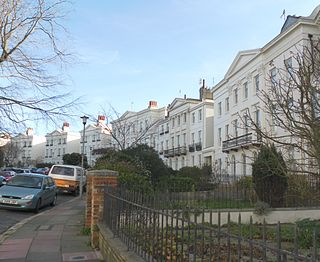 W
WMontpelier Crescent is a mid 19th-century crescent of 38 houses in the Montpelier suburb of Brighton, part of the English coastal city of Brighton and Hove. Built in five parts as a set-piece residential development in the rapidly growing seaside resort, the main part of the crescent was designed between 1843 and 1847 by prominent local architect Amon Henry Wilds and is one of his most distinctive compositions. Extra houses were added at both ends of the crescent in the mid-1850s. Unlike most other squares, terraces and crescents in Brighton, it does not face the sea—and the view it originally had towards the South Downs was blocked within a few years by a tall terrace of houses opposite. Montpelier was an exclusive and "salubrious" area of Brighton, and Montpelier Crescent has been called its "great showpiece". Wilds's central section has been protected as Grade II* listed, with the later additions listed separately at the lower Grade II. The crescent is in one of the city's 34 conservation areas, and forms one of several "outstanding examples of late Regency architecture" within it.
 W
WThe Regency period in the United Kingdom is the period between 1811 and 1820, when King George III was deemed unfit to rule and his son, later George IV, was instated to be his proxy as Prince Regent. It was a decade of particular manners and fashions, and overlaps with the Napoleonic period in Europe.
 W
WRegency reenactment is historical reenactment of the British Regency period. Groups portray the period from 1811 to 1820 through costume, manners, food, and social gatherings that celebrate the spirit of the era.
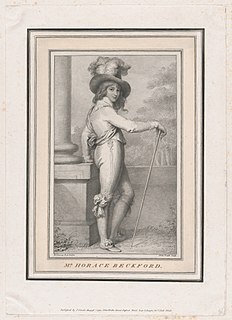 W
WWilliam Horace Pitt-Rivers, 3rd Baron Rivers, known as Horace Beckford until 1828, was a British nobleman and gambler.
 W
WRegency romances are a subgenre of romance novels set during the period of the British Regency (1811–1820) or early 19th century. Rather than simply being versions of contemporary romance stories transported to a historical setting, Regency romances are a distinct genre with their own plot and stylistic conventions. These derive not so much from the 19th-century contemporary works of Jane Austen, but rather from Georgette Heyer, who wrote over two dozen novels set in the Regency starting in 1935 until her death in 1974, and from the fiction genre known as the novel of manners. In particular, the more traditional Regencies feature a great deal of intelligent, fast-paced dialogue between the protagonists and very little explicit sex or discussion of sex.
 W
WTimbuctoo is the fictional account of the illiterate American sailor Robert Adams' true life journey to Timbuktu, and his arrival in Regency London. The novel is written by Anglo-Afghan author, filmmaker, and adventurer Tahir Shah. It was released on July 5, 2012 by Secretum Mundi Publishing.
 W
WArthur Wellesley, 1st Duke of Wellington, was an Anglo-Irish soldier and Tory statesman who was one of the leading military and political figures of 19th-century Britain, serving twice as prime minister. He ended the Napoleonic Wars when he defeated Napoleon at the Battle of Waterloo in 1815.